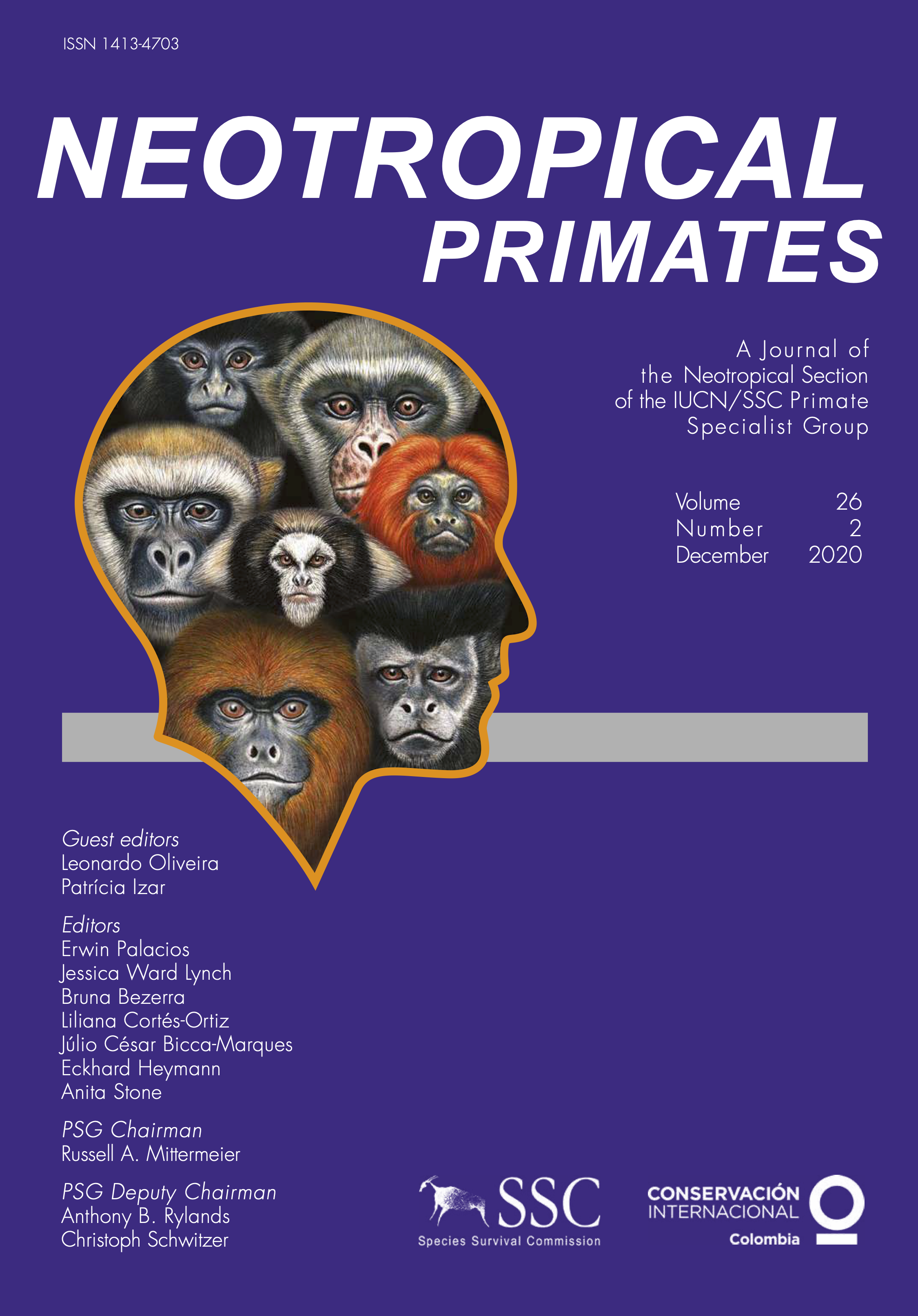Howlers in an anthropogenic matrix: how does an Alouatta belzebul group deal with the severely fragmented landscape of the Atlantic forest in northeastern Brazil?
DOI:
https://doi.org/10.62015/np.2020.v26.49Keywords:
Use of space, activity patterns, matrix permeability, Red-handed Howler MonkeyAbstract
The red-handed-howler-monkey (Alouatta belzebul) is vulnerable to extinction mainly due to habitat loss and fragmentation, as well as hunting pressure. In its Atlantic Forest range, small populations inhabit 31 sparse fragments in a landscape dominated by a matrix of sugar cane plantations, pastures and urban areas. The aim of the present study was to analyze the use of space, activity pattern and diet of A. belzebul in a small secondary forest fragment (1.8 ha) and its surrounding anthropogenic matrix in Paraíba, Brazil, in order to understand how howlers deal with fragmentation. We used Scan Sampling and grid cell (0.25ha each) methods to record the data. The home range was estimated to cover 8.75 ha, and, although the matrix area was more than twice as large as the forest area, the frequency of use was roughly equal (50.2% matrix; 49.8% forest). Daily ranges were also not significantly different between the days of forest and matrix use and for displacements; in the latter, howlers crossed sugarcane plantation, dirt roads and barbed wire fences. “Travelling” occurred more frequently in the matrix and “feeding” was more frequent in the forest. Fifty-eight different plant species were consumed, including important resources obtained in the matrix. We provide evidence that anthropogenic matrices can be included as an important part of this species’ home range and food resources. This informa- tion provides support for planning urgently required habitat management strategies for the conservation of this species, aiming to ensure secure dispersal and reduce their exposure to conflict with humans and environmental constraints.

Downloads
Published
Issue
Section
License
Copyright (c) 2020 Gabriela Ludwig, Gabriel Yan Figueiredo Lima, Renata B. de Azevedo, Leandro Jerusalinsky, Monica M. Valença-Montenegro, Gerson Buss

This work is licensed under a Creative Commons Attribution-NonCommercial-ShareAlike 4.0 International License.


